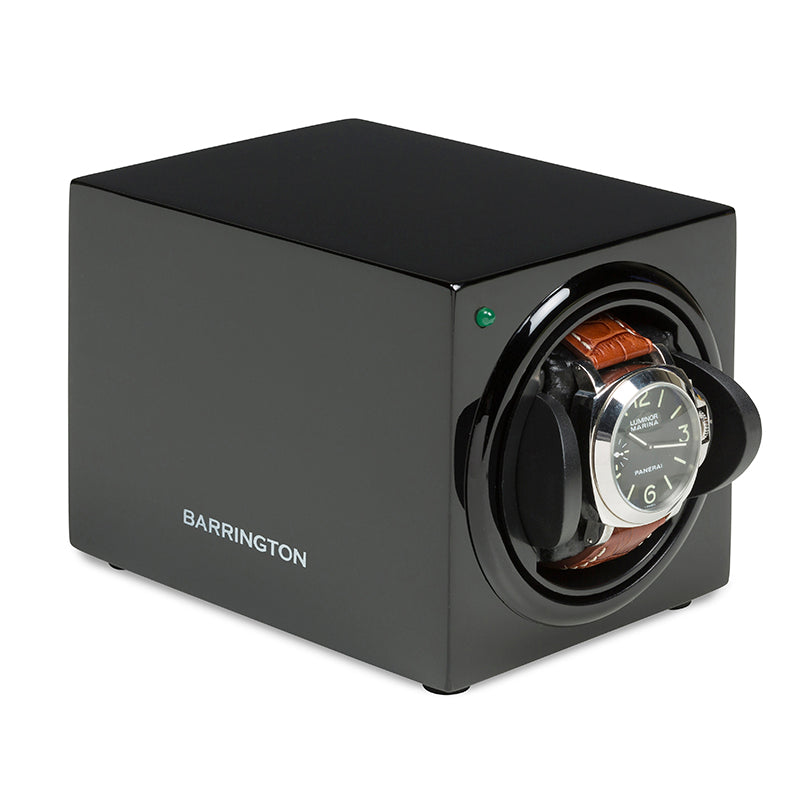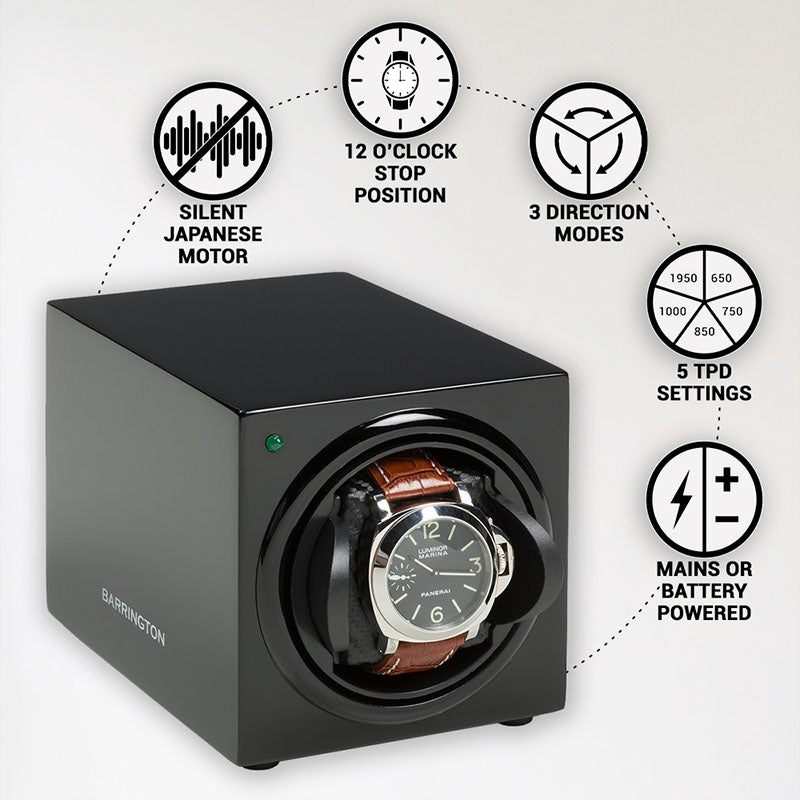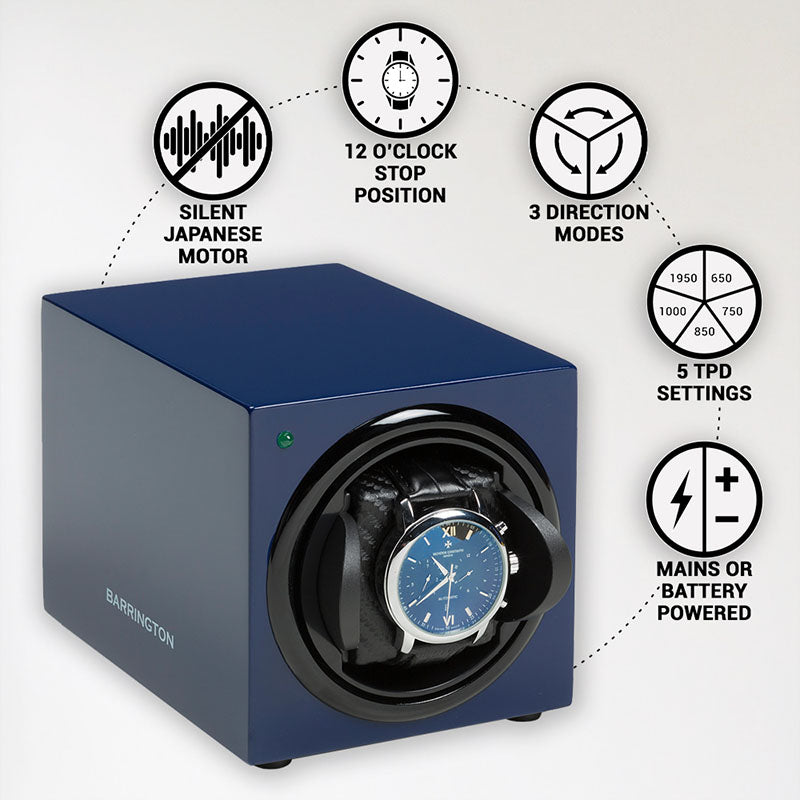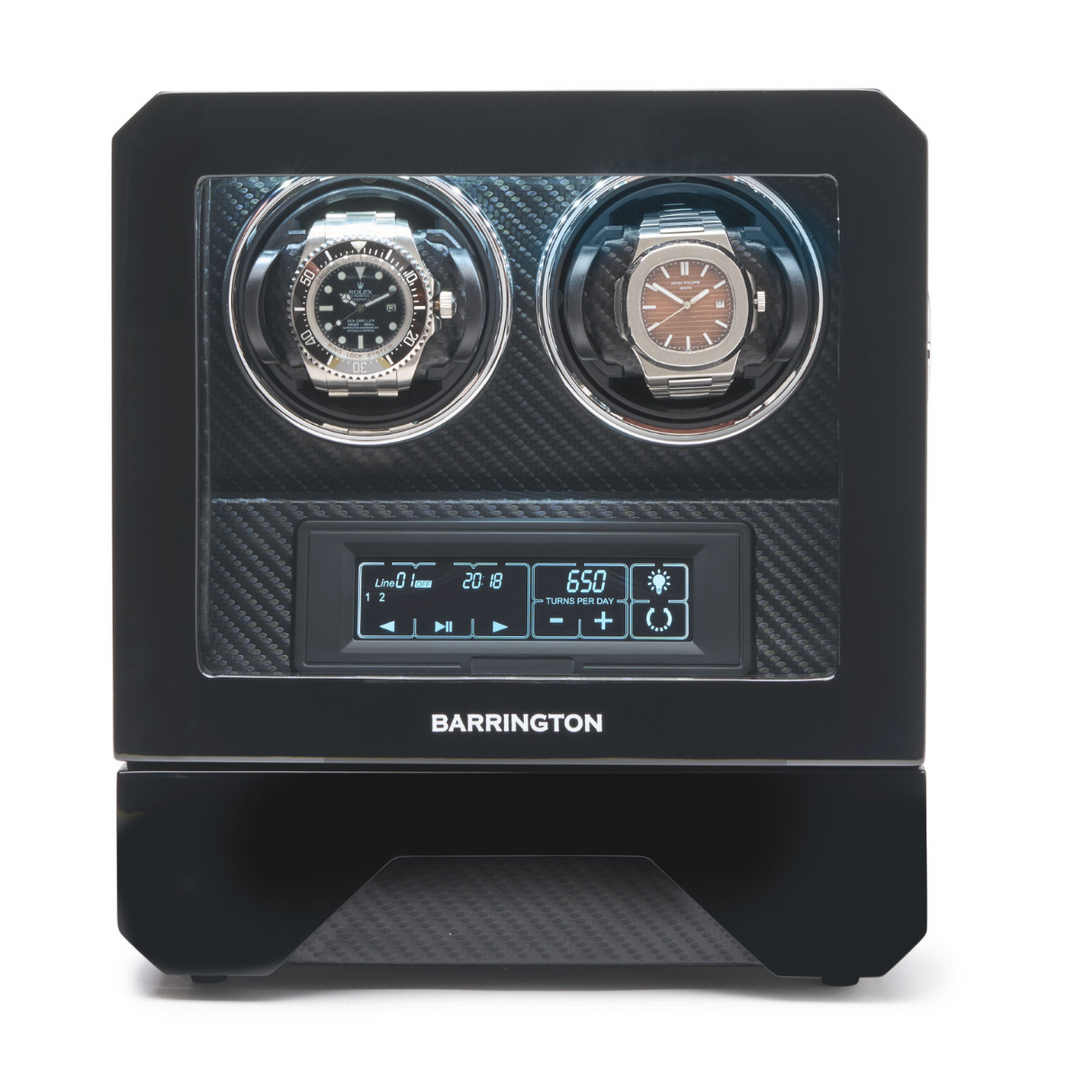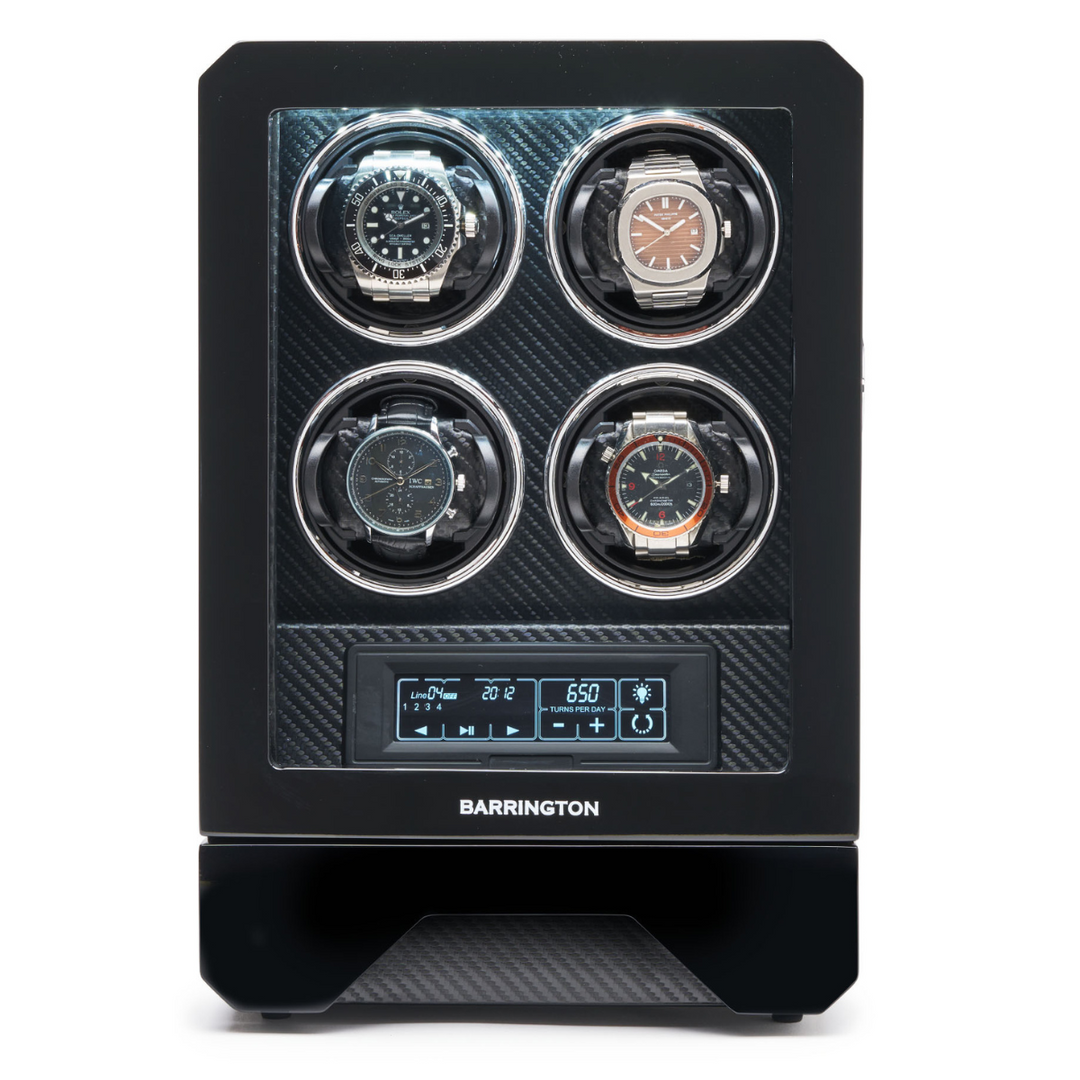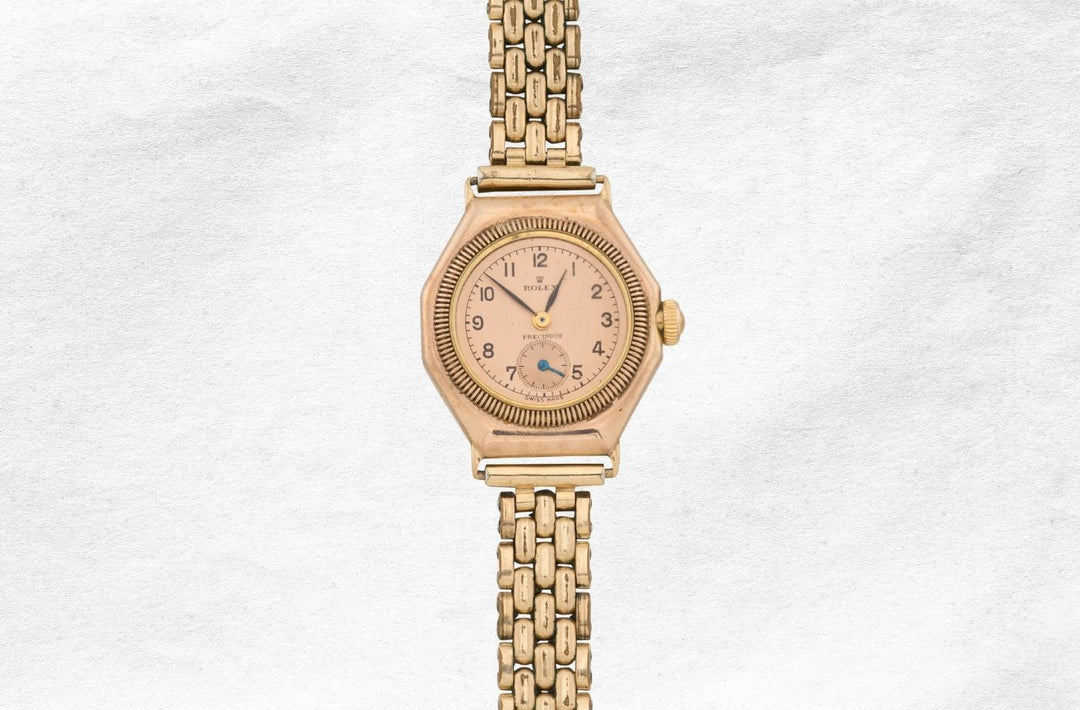How to Set Optimal Winding Parameters for My Watch
Setting the right winding parameters for your automatic watch is essential to preserving its performance and longevity. Automatic watches are designed to harness the motion of your wrist, maintaining a consistent power reserve as you go about your day. When left stationary, however, these watches may stop, losing their timekeeping accuracy and potentially causing wear on their delicate internal mechanisms over time. This is where a well-calibrated watch winder becomes invaluable, simulating wrist movements to keep your watch running smoothly, even when it’s not in use.
Proper winding doesn’t just prevent your watch from stopping—it helps protect the intricate components within, including the lubricants that are crucial for smooth operation. By setting optimal winding parameters, you’re actively safeguarding your watch’s accuracy, ensuring it’s always ready to wear without needing frequent manual adjustments. Using the right Turns Per Day (TPD) and rotation direction tailored to your watch model, you can maintain its precision and enhance its overall lifespan.
Understanding Turns Per Day (TPD)
Turns Per Day, or TPD, is a measure of how many rotations a watch winder makes to keep an automatic watch fully wound. This is an essential parameter, as each automatic watch model has a specific TPD range that mimics the natural wrist motion required to maintain its power reserve. When correctly set, the TPD keeps the watch’s internal components moving steadily, preserving its timekeeping accuracy and protecting its mechanisms from wear caused by irregular winding.
Most automatic watches need between 650 and 950 TPD, though some models may require more or less, depending on their movement and design. For example, popular models like the Rolex Submariner and Omega Seamaster typically fall within this range, with optimal performance around 650–850 TPD for most daily use. Checking the recommended TPD for your specific watch model is vital, as over- or under-winding can impact its performance.
If you’re unsure of the correct TPD, consult your watch’s manual or refer to our TPD guide for various brands. Setting the correct TPD ensures that your watch remains in peak condition, always ready to wear and accurate whenever you need it.
Determining the Correct Direction
Setting the correct winding direction is crucial for optimising your watch’s performance. Most winders offer three rotation options: clockwise, counterclockwise, and bidirectional. Each setting mimics the natural wrist motion needed to keep the watch fully wound, with different models benefiting from specific directions.
- Clockwise Rotation: Best for watches that require only clockwise movement to maintain power.
- Counterclockwise Rotation: Ideal for watches that rely on counterclockwise motion.
- Bidirectional Rotation: Alternating between clockwise and counterclockwise, this setting suits many watches, especially those designed to wind in either direction.
Choosing the correct direction not only ensures accurate timekeeping but also helps prevent undue strain on the movement. For most watches, knowing the preferred rotation direction will keep it running at its best without manual winding.
Step-by-Step Guide to Setting Winding Parameters
Setting the optimal winding parameters for your automatic watch involves a few simple steps to ensure it stays accurate and well-maintained. Here’s a step-by-step approach to finding the ideal settings:
- Manual Winding: Begin by manually winding your watch to ensure it’s fully powered before placing it on the winder. Most automatic watches can be wound by turning the crown 20–30 times, which gives it a strong starting point.
- Choosing TPD: Start with the lowest Turns Per Day (TPD) setting on your winder, ideally around 650 TPD. Allow the watch to run for 48 hours at this setting, checking occasionally to see if it’s keeping accurate time. This gives you a baseline without risking overwinding.
- Adjusting Direction: If your watch doesn’t maintain accurate time with the initial TPD setting, experiment with different rotation directions: clockwise, counterclockwise, and bidirectional. Some watches require a specific direction for optimal performance, so try each option to see which one works best.
- Fine-Tuning: If the watch still isn’t keeping time accurately, increase the TPD in small increments, such as moving up to 750 or 850 TPD. Allow each adjustment to run for another 48 hours before further changes. This gradual approach helps find the perfect balance for your watch without overworking its movement.
By following these steps, you can identify the exact settings that keep your watch running smoothly, ensuring it’s always ready to wear with the accuracy and care it deserves.
Common Mistakes to Avoid
One common error when using a watch winder is selecting the wrong TPD or rotation direction, which can lead to overwinding or, conversely, insufficient winding. These settings are essential to ensuring the watch’s movement isn’t strained and that it keeps accurate time. Always refer to the recommended TPD and direction for your watch model to avoid unnecessary wear.
Another pitfall is leaving the watch on the winder continuously without periodic checks. Watches may need slight adjustments over time, and regular monitoring can help maintain optimal performance. By occasionally checking your watch’s accuracy, you can catch any minor discrepancies and make necessary adjustments to keep the watch in peak condition.
Featured Watch Winders: Our Top Picks
Selecting the right watch winder is key to preserving and showcasing your collection. High-quality winders do more than simply keep your watches wound; they enhance the longevity of your timepieces by providing the exact settings needed for optimal performance. With a range of features suited for various watch models and user needs, our recommended winders combine functionality with elegant design.
Whether you’re seeking a single, understated winder or a multi-watch model with advanced features, the options below offer versatile settings and premium build quality to match your collection’s requirements.
Barrington Single Winder - Burnt Amber

Barrington Special Edition Single Winder - American Walnut (unvarnished)

4 Watch Winder

Each of these Barrington watch winders provides a unique blend of design, technology, and reliability, ensuring your watches are both well-maintained and beautifully displayed.
Final Thoughts
Setting the correct winding parameters is essential for maintaining the functionality and longevity of your automatic watch. By choosing the right Turns Per Day and rotation direction, you’re actively preserving the intricate mechanisms within, ensuring your watch remains accurate and reliable over time.
A quality watch winder is more than just a convenience; it’s a valuable tool that helps extend your timepiece’s lifespan, allowing you to enjoy it at its best without frequent manual adjustments. With a bit of care and the right settings, your winder will keep your watch ready to wear, showcasing its craftsmanship and precision whenever you need it.
FAQ: Setting the Right Winding Parameters for Your Watch
How do I find the correct Turns Per Day (TPD) for my watch?
To find the optimal TPD for your specific watch, you can refer to the detailed guide available on our website, where we list the recommended TPD settings for various watch models. If you're unsure, checking the manufacturer’s instructions is another option. Using the correct TPD helps ensure that your watch remains fully wound and maintains accurate time.
What happens if I set the wrong winding parameters?
Incorrect settings, like too many or too few turns per day, can affect your watch's timekeeping or cause it to stop. Using the wrong direction can also impact its performance. Always refer to our website’s TPD guide to ensure you’re using the correct settings, which will help protect the internal mechanisms of your watch.
Can I overwind my watch using a watch winder?
No, modern winders are designed with built-in protection to prevent overwinding. However, it’s important to set the winder to the correct TPD and direction, which you can easily find on our website. Using the wrong settings won’t overwind the watch, but it could lead to unnecessary wear if not properly configured.
Is it necessary to wind my watch manually before placing it in the winder?
Yes, it's advisable to manually wind your watch about 20 to 30 times before placing it in the winder. This ensures the watch has enough power to start working smoothly with the winder. From there, the winder will maintain its power reserve as long as it’s set to the correct TPD and direction, which you can find on our TPD guide page.
Should I adjust the winding settings when switching between watches?
Yes, different watches often require different TPD and rotation settings. Always check our online TPD guide before switching to a different watch to ensure it’s set correctly. Adjusting the winder for each specific watch helps maintain its longevity and accuracy.


